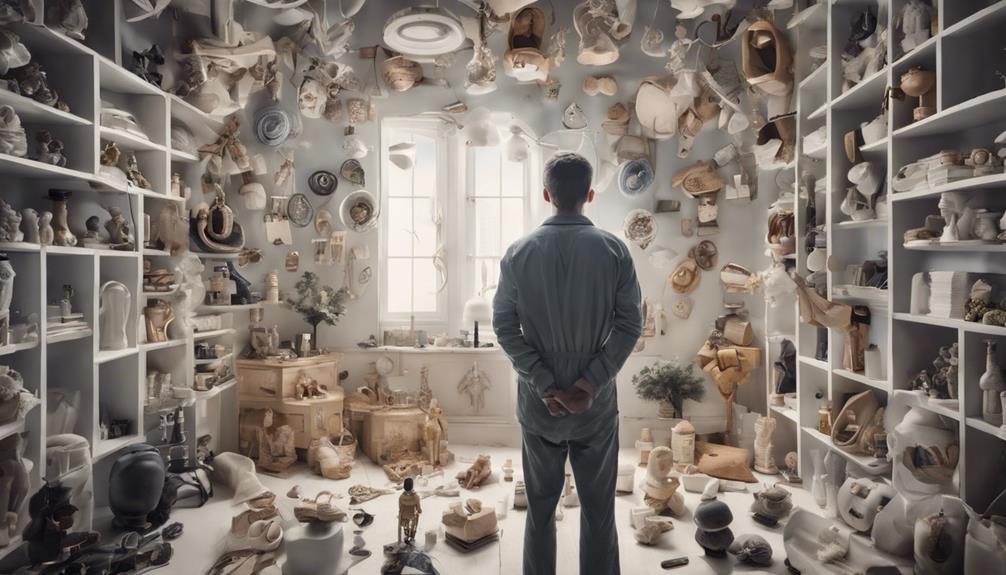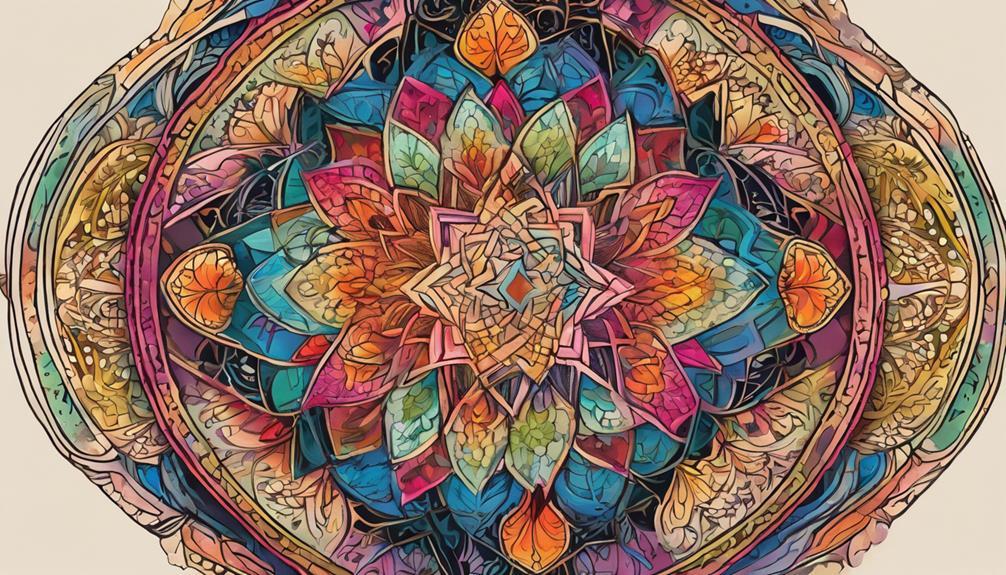As we delve into the complexities of Enneagram Stances, we discover an intriguing world where our natural instincts for survival are interwoven with our individual personalities.
The three instinctual variants – self-preservation, social, and one-to-one – serve as pillars shaping our responses to the world around us.
By grasping the nuances of these variants, we open doors to a deeper understanding of ourselves and those we interact with daily.
Join us on this journey of self-discovery and interpersonal insight, where the Enneagram stances shed light on the complexities of human behavior and relationships.
Key Takeaways
- Self-Preservation prioritizes safety and stability for personal well-being.
- Social Instinct focuses on relationships within larger groups for acceptance.
- One-to-One Instinct seeks emotional depth and profound connections in relationships.
- Enneagram Stances influence behaviors, guiding assertiveness and collaboration in interactions.
Instinctual Variants Overview
Instinctual Variants Overview delves into the fundamental survival strategies of self-preservation, social, and one-to-one within the Enneagram framework, shaping individuals' interactions and relational dynamics. The Enneagram, a powerful tool for understanding personality, highlights how each type adopts one of these three dominant instinctual variants, profoundly influencing behaviors, decision-making processes, relationships, and daily experiences. By recognizing these variants, we gain insight into how individuals prioritize their needs and engage with the world around them.
Self-preservation instinct drives individuals to ensure their basic survival needs are met. This variant influences behaviors by focusing on practical concerns such as safety, health, and stability. Social instinct emphasizes connections within groups, leading individuals to seek belonging, acceptance, and influence. Lastly, the one-to-one instinct centers on forming deep, intimate connections with others, guiding individuals towards building close relationships.
Understanding these instinctual variants offers a comprehensive view of how individuals approach life, make choices, and interact with others. By delving into these survival strategies, we can navigate interpersonal dynamics more effectively, fostering harmony and mutual understanding.
Self-Preservation Instinct Exploration

Exploring the Self-Preservation Instinct reveals how individuals prioritize personal safety, material security, and physical well-being in their daily lives. The self-preservation instinct influences behaviors focused on ensuring comfort, managing resources, and maintaining a stable environment. Individuals with a dominant self-preservation instinct prioritize their own needs for survival and security. Decision-making is guided by concerns around resources, health, and creating stability in life. This instinctual variant significantly impacts how individuals navigate daily life, placing a strong emphasis on personal well-being.
| Behaviors | Priorities | Influence on Decision-Making |
|---|---|---|
| Comfort | Personal Safety | Resources |
| Resources | Material Security | Health |
| Stable Environment | Physical Well-being | Stability in Life |
Understanding the self-preservation instinct provides insight into how individuals approach various aspects of their lives, from managing their resources to ensuring their physical health. This instinct plays a crucial role in shaping an individual's priorities and actions towards creating a secure and stable existence.
Social Instinct Analysis
Within the Enneagram framework, the Social Instinct delves into the intricate dynamics of belonging and connections within broader social contexts. Individuals with a dominant Social Instinct prioritize relationships within larger groups and seek acceptance within social structures. This drive manifests in behaviors focused on group dynamics, seeking approval, and fostering meaningful relationships.
Those with a strong Social Instinct value connections and membership in social settings, finding fulfillment in being part of a community. Understanding the nuances of the Social Instinct is crucial for navigating complex social dynamics effectively. By recognizing the importance of belonging, seeking acceptance, and engaging with group dynamics, individuals can cultivate deeper connections and establish a sense of belonging within their social environments.
The Social Instinct offers insight into how individuals interact within larger social structures, emphasizing the significance of relationships and connections in creating a fulfilling social experience.
One-to-One Instinct Examination

Delving into the realm of personal connections and intimate relationships, the One-to-One Instinct sheds light on the profound significance of emotional depth and passion within individuals. This instinct governs areas such as sexuality, close friendships, and vitality, influencing behaviors related to emotional depth and passion in relationships.
Individuals with a dominant One-to-One Instinct seek personal connections and prioritize forming deep emotional bonds with others. Understanding this instinct is crucial in recognizing the importance of intimate relationships in one's life. To delve deeper into the One-to-One Instinct Examination, consider the following:
- Emotional Depth: Individuals with a strong One-to-One Instinct often seek to establish deep emotional connections with others, valuing authenticity and vulnerability in their relationships.
- Passion in Relationships: This instinct drives individuals to invest emotionally and passionately in their one-on-one connections, fostering a sense of closeness and intensity in their interactions.
- Importance of Intimacy: The One-to-One Instinct highlights the significance of intimacy in personal relationships, emphasizing the fulfillment that comes from deep emotional bonds and genuine connections.
Impact on Behavior and Relationships
The influence of Enneagram stances on daily interactions is profound, shaping behaviors in social settings and guiding individuals towards assertiveness, collaboration, and introspection. Each stance – Aggressive, Dependent, and Withdrawn – plays a crucial role in how individuals navigate relationships and conflicts.
The Aggressive stance is characterized by a drive to move against others to achieve goals, often leading to direct and sometimes confrontational interactions. In contrast, the Dependent stance seeks support and validation through relationships, which can sometimes result in over-dependence and challenges in achieving independence.
The Withdrawn stance values introspection and careful planning in relationships, influencing conflict resolution approaches and decision-making processes. Understanding how Enneagram types align with these stances can offer valuable insights into social dynamics, aiding individuals in effectively navigating various social situations.
Frequently Asked Questions
What Are the Three Stances of the Enneagram?
The three stances of the Enneagram are Aggressive, Dependent, and Withdrawing. Each stance encompasses distinct personality traits and behaviors.
Aggressive individuals, like Types Three, Seven, and Eight, are energetic and focused on achieving goals.
Dependent types, such as One, Two, and Six, prioritize relationships for validation and success.
Withdrawing types, like Four, Five, and Nine, excel at introspection and conflict resolution but may struggle with self-doubt.
Understanding these stances aids in navigating social interactions and career choices.
What Are the Three Instincts of the Enneagram?
Let's dive into the intricate world of Enneagram instincts. These primal drives—self-preservation, social, and one-to-one—shape our survival strategies, social bonds, and intimate connections.
Each instinct guides our behaviors in unique ways, from seeking security and belonging to fostering close relationships. Mastering the balance of these instincts unlocks a deeper understanding of ourselves and others, paving the path for enriched relationships and personal development.
What Are Instinctual Variants of the Enneagram?
Instinctual variants in the Enneagram refer to self-preservation, social, and one-to-one instincts that influence how individuals interact with the world. These variants shape our priorities and behaviors, impacting decision-making, relationships, and daily experiences.
Understanding these variants offers profound insights into how individuals prioritize survival needs, social connections, or intimate relationships. Recognizing the dominant instinctual variant can unveil the motivations, fears, and desires that drive each Enneagram type.
What Are the 3 Enneagram Subtypes?
Sure, the three Enneagram subtypes are self-preservation, social, and one-to-one. These variations showcase how each Enneagram type manifests their fundamental survival instincts.
Understanding these subtypes helps us grasp how individuals prioritize their needs and actions. It allows for a more refined understanding of how Enneagram types engage with the world, with each type having a dominant subtype that significantly shapes their daily interactions and relationships.
Conclusion
As we traverse the intricate landscape of the Enneagram stances, we unveil the intricate tapestry of our instinctual variants. Like threads weaving through the fabric of our existence, the self-preservation, social, and one-to-one instincts shape our interactions and relationships.
Embracing the depths of our motivations and behaviors, we embark on a journey of self-discovery and growth. Let's navigate the intricate dance of human connection with newfound understanding and insight, illuminating the path to personal evolution.
Felicity, our Author, pens in-depth articles and guides that delve into the heart of personal discovery. Her narrative-driven approach weaves together theory, practice, and personal anecdotes, making the journey of self-exploration both relatable and inspiring. Felicity’s contributions help illuminate the path for those seeking a deeper understanding of themselves and their relationships.










